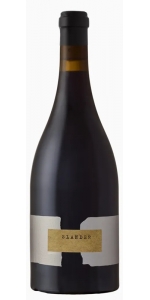Wine from Orin Swift
| The history of Orin Swift Cellars dates back to 1995 when on a lark, David Swift Phinney took a friend up on an offer and went to Florence, Italy to spend a semester “studying”. During that time, he was introduced to wine, how it was made, and got hooked. A few more years of university led to graduation and eventually a job at Robert Mondavi Winery in 1997 as a temporary harvest worker. Deciding that if he was going to work this hard, it would eventually have to be for himself, he founded Orin Swift Cellars in 1998; Orin is his father’s middle name and Swift is his mother’s maiden name. With two tons of zinfandel and not much else, he spent the next decade making wine for others as well as himself and grew the brand to what it is today. We welcome you to stop by and visit us at our tasting room located in downtown St. Helena. |
Orin Swift 'Slander' Pinot Noir is made from 100 percent Pinot Noir.
Staying humble and letting the grapes do the talking is how we get better at winemaking every vintage. Pinot Noir requires even more humility, especially in the vineyards – when the grapes are ready, they’re ready. Requiring a gentler approach with punchdowns rather than pumpovers, Pinot Noir expresses itself when it is lead manipulated. Slander is the union of California Pinot Noir made in the Orin Swift signature style delivering a bold and expressive wine.
There are several fantastic growing regions in California bes t suited to Pinot Noir—from down in Santa Barbara County to up north in the Anderson Valley to everywhere in between. We’ve been fortunate to source Pinot Noir from across the state in many of these ideal locales for years . Finnick y, sensitive and with lots of personality, the varietal requires a long growing season and relatively mild weather to ripen and develop its beautiful flavors , all while retaining its brightness . Sourced from the Rancho Real, Annapolis, Del Rio, Laguna and a few other vineyards, this vintage of Slander is an example of the sum being greater than its parts. WINEMAKER’S NOT
The 2022 Slander delivers a medium ruby core with a lucid rim that-s almost translucent. Aromatically, Bing cherry, briar fruit and some raspberry give way to ripe strawberry and associated red fruits. Bright and enveloping on the entry, notes of fresh strawberry, watermelon, thyme and a hint of funk come through. Spicy on the finish, the wine closes with a flash of blue fruits and lift.
- back
Selected Options
Wineries
Categories
Pricing
Countries
Regions
Grape Types
Wineries
Organic/Free Shipping
Thibaut-Janisson Blanc de Chardonnay is made from 100% Chardonnay
Appellation 100% Virginia
Winemaking Notes The grapes are handpicked in small baskets late August and are gently pressed as whole clusters. After a settling of 24 hours, the juice is inoculated with selected Champagne yeast and ferments in stainless steel tanks at low temperature. Once the fermentation is over, the wine ages on the fine lees until the spring of the following year. The blend is then put together and cold-stabilized prior to bottling. The bottling occurs in the spring when the cellar temperature is conducive to a second fermentation in the bottle. The now sparkling wine will age on the yeast for over 24 months. At disgorging, a small amount of dosage liquor is added in order to balance the natural acidity.
Clean, crisp and refreshing! With scents of white flowers, apples and pears. This sparkling wine is elegant and complex with vibrant aromas, and fine active streamers. The depth of complexity is elegant and the intricate nuances of the terroir fill the nose and stimulate the palate. It’s full of youthful, bright and alert acidity.
Ferren Chardonnay Sonoma Coast is made from 100 percent Chardonnay.
The Sonoma Coast bottling is a blend of barrels from Ferren's single vineyard offerings; Lancel Creek, Silver Eagle, Volpert, and Frei Road Vineyards. The wine is always somewhat more approachable early in its life as less new oak is used in the blend. Pure and translucent fruit is the hallmark of this cuvée. Citrus, quince, sea spray, and minerals are buoyed by refreshing acidity and a seamless finish.
Review:
A nuanced, tangy, mouthwatering and approachable wine that is both complex and very drinkable. The aromas are delicate, lifted and fresh, with oyster shells, lime zest, white flowers and chamomile. The palate is super fresh, layering salinity, richness and a long finish. Medium- to full-bodied. Drink or hold
-James Suckling 98 Points





